Crime and punishment in the wildlife trade - WWF UK
Crime and punishment in the wildlife trade - WWF UK
Crime and punishment in the wildlife trade - WWF UK
You also want an ePaper? Increase the reach of your titles
YUMPU automatically turns print PDFs into web optimized ePapers that Google loves.
4 The response <strong>in</strong> Europe <strong>and</strong> <strong>the</strong> US<br />
Although <strong>the</strong> EC itself is not a party to CITES, it has issued a series of regulations that have<br />
sought to implement <strong>the</strong> convention <strong>in</strong> <strong>the</strong> member states 34 . EC rules are more <strong>in</strong>clusive than<br />
CITES itself – for example, <strong>the</strong>y <strong>in</strong>corporate a wider range of species – <strong>and</strong> provide for <strong>trade</strong><br />
bans on suspect range states 35 . Bans have been imposed on a variety of species or <strong>trade</strong> from<br />
range states over time 36 <strong>and</strong> removed when appropriate. But a recent report 37 concluded that<br />
such bans need to be properly implemented if <strong>the</strong>y are to have any effect – <strong>and</strong> implementation<br />
is <strong>the</strong> prov<strong>in</strong>ce of <strong>the</strong> member states. Moreover, <strong>the</strong> EC does not have <strong>the</strong> ability to impose <strong>the</strong><br />
actual sanction that an offender would receive. That rema<strong>in</strong>s with<strong>in</strong> each member state’s<br />
exclusive jurisdiction <strong>and</strong> thus accounts for <strong>the</strong> wide differences <strong>in</strong> penalties imposed across <strong>the</strong><br />
various countries.<br />
Table 2 highlights some of <strong>the</strong>se <strong>in</strong>consistencies <strong>and</strong> provides an easy reference for US<br />
legislation. It is important to underst<strong>and</strong> <strong>the</strong>se discrepancies when consider<strong>in</strong>g <strong>the</strong> s<strong>in</strong>gle market<br />
aspect of <strong>the</strong> EC: <strong>in</strong> o<strong>the</strong>r words, <strong>the</strong> effectiveness of <strong>wildlife</strong> <strong>trade</strong> laws depends upon <strong>the</strong> port<br />
of entry to <strong>the</strong> EC of <strong>the</strong> illegal goods 38 .<br />
While <strong>the</strong> enforcement regimes, potential for conviction, <strong>and</strong> available penalties vary across <strong>the</strong><br />
EC, <strong>the</strong>re will be additional opportunities for <strong>the</strong> serious or dedicated trafficker to hedge some<br />
of <strong>the</strong> risk <strong>in</strong>volved <strong>in</strong> ply<strong>in</strong>g this <strong>trade</strong>. Remedy<strong>in</strong>g this situation will require more concerted<br />
action by <strong>the</strong> EC CITES authorities 39 . For example, <strong>the</strong> fact that <strong>the</strong>re is no possibility of a<br />
custodial sentence be<strong>in</strong>g imposed <strong>in</strong> Portugal for a <strong>wildlife</strong> <strong>trade</strong> offence, <strong>and</strong> that <strong>the</strong> f<strong>in</strong>e level<br />
is very low, would suggest a weak l<strong>in</strong>k <strong>in</strong> <strong>the</strong> EC’s ability to police its borders effectively.<br />
By contrast, <strong>the</strong> German penal code attaches a possible 10-year sentence where it is felt that<br />
last<strong>in</strong>g harm has been done to a species threatened with ext<strong>in</strong>ction 40 where <strong>the</strong> motive is profit.<br />
This provision does at least <strong>in</strong>corporate a clear <strong>and</strong> effective rationale to <strong>the</strong> law which seems to<br />
be absent <strong>in</strong> most o<strong>the</strong>r EC states.<br />
34<br />
Regulation 3626/82, Regulation 3418/83, Reg. 338/97, 939/97 (as well as a variety of amend<strong>in</strong>g regulations<br />
to implement specific bans – see fur<strong>the</strong>r above, footnote 18).<br />
35<br />
E.g. Article 10(1)(b) of Regulation 3626/82, see fur<strong>the</strong>r section 2 above <strong>in</strong> relation to species-specific bans.<br />
36<br />
UNEP, WCMC, Effectiveness of past EC stricter measures on <strong>wildlife</strong> imports, EC Commission (3 Dec. 2001).<br />
37 Ibid.<br />
38<br />
Note however, that CEMA (s170) is able to be applied as a cont<strong>in</strong>u<strong>in</strong>g offence (as <strong>in</strong> <strong>the</strong> Sissen case) should an<br />
evasion of <strong>the</strong> prohibitions/restrictions of <strong>the</strong> EC Wildlife Trade Regulations take place extra-territorially, <strong>and</strong> should<br />
<strong>the</strong> specimen be imported to <strong>the</strong> <strong>UK</strong> without proper compliance with <strong>the</strong> legal provisions.<br />
39<br />
For example <strong>the</strong> EC Committee on <strong>trade</strong> <strong>in</strong> <strong>wildlife</strong>, <strong>the</strong> enforcement group, <strong>and</strong> <strong>the</strong> scientific work<strong>in</strong>g group.<br />
40 Penal Code s330.<br />
19



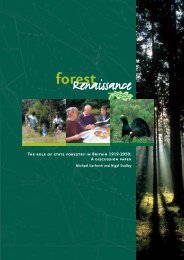
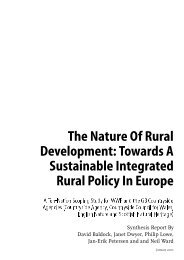
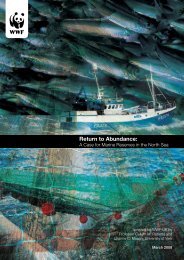

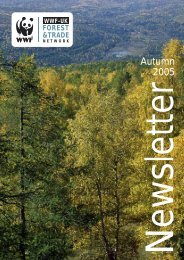

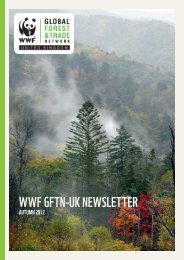
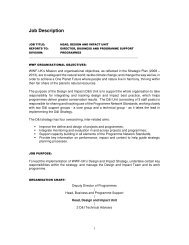
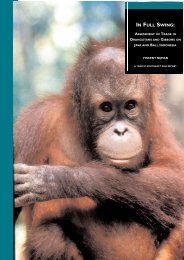
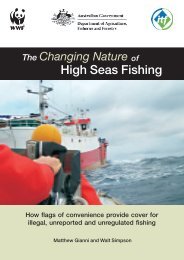
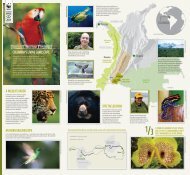
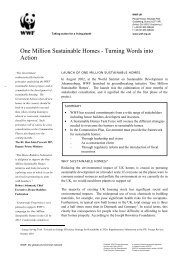
![[PDF] Causes for concern: chemicals and wildlife - WWF UK](https://img.yumpu.com/31929970/1/184x260/pdf-causes-for-concern-chemicals-and-wildlife-wwf-uk.jpg?quality=85)
